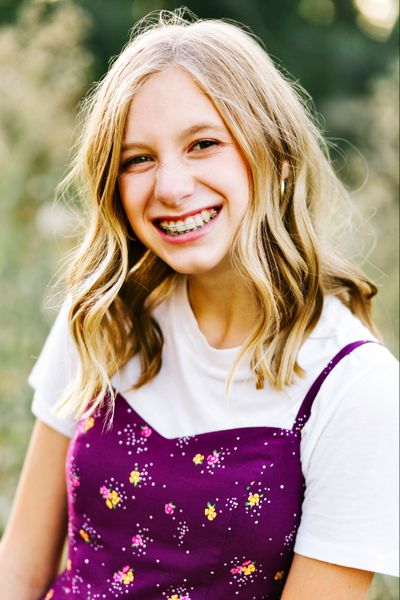Lucia Jensen of Lewis and Clark High wins Eva Lassman Memorial Holocaust-themed writing contest, high school division

First place
‘Righteous Among the Nations’
A heroic champion of the Jewish cause in Holland during World War II, Corrie ten Boom described a life well-lived when she stated, “The measure of a life, after all, is not its duration but its donation” (brainlyquote.com). Ten Boom and her Christian family “donated” their lives to the Jews of Holland by helping dozens escape the Nazi Holocaust. After their resistance efforts came to light, Corrie and her sister Betsy spent a hellish year imprisoned in a penitentiary and the notorious female concentration camp, Ravensbrook. Corrie survived internment and advocated for reconciliation and healing from the psychological trauma left by the Nazi occupation (encyclopediaushmm.org).
In 1967 the Yad Vashem Remembrance Authority honored Corrie ten Boom with a Righteous Among the Nations Award. Presented to over 27,700 non-Jewish individuals, the Righteous Among the Nations Award honors citizens who risked their lives during the Holocaust to help protect Jews during Nazi occupation. The Righteous rejected the dehumanization of Jews and used their privilege to house, help and preserve the Jewish community. Monsignor Jules-Géraud Saliège, a catholic clergyman, plainly stated, “Jewish men are men. Jewish women are women. … They are part of the human race. They are our brothers like so many other people” (yadvashem.org). Fighting against the status quo required both compassion and conviction. Among other honorable traits, the Righteous Among Nations possessed bravery, creativity and empathy, and they used these traits in their subversive and secretive work for Jews.
Irena Sendler
The Righteous willingly took bold risks, and the Righteous showed audacious courage. Hiding Jews, stealing ration cards, lying to Nazis and subverting German authority at every turn, the Righteous risked their lives, often for strangers. A lion-hearted woman, Irena Sendler, used her position as a social worker in Warsaw to support Jews imprisoned in Polish ghettos. At great personal danger, Irena sneaked into ghettos, attended to dying Jews, and smuggled others out and into hiding places (yadvashem.org). Later as a main activist for the Council for Aid to Jews, Irena played a crucial role in rescuing the handful of Jews who survived deportation in Poland. Eventually arrested and sentenced to death, Irena miraculously escaped prison and immediately resumed her work undeterred. Irena and all her fellow Righteous showed impressive courage in their fight for justice.
Sofka Skipwith
Outsmarting the Nazis took creativity and innovation – two qualities possessed by the Righteous. One woman named Sofka Skipwith showed her problem-solving skills by inserting a list of names of South American Jews with passports into a toothpaste tube and delivering it to diplomats with the authority to protect these Jews from deportation (yadvashem.org). Many other Righteous found creative hiding spots for Jews while developing intricate alarm systems to protect themselves from vigilant Nazis. In Anne Frank’s classic story, Anne and her family hid for 25 months in an annex hidden behind a fake bookshelf (“Diary of a Young Girl”). During the Nazi occupation, the Righteous lied easily, thought quickly and moved swiftly to accomplish their life-saving work.
Hermana Vries de-van Corbach and Tatyana Minkovskaya
The Righteous displayed empathy and compassion toward each Jew they attempted to save. They willingly sacrificed their own safety to extend understanding and help to society’s most vulnerable. Hermana Vries de-van Corbach and Tatyana Minkovskaya took in Jewish children and raised them like a biological child. In Tatyana’s case, baby Nellie was handed to her by a random Jewish woman. When the women asked Tatyana to care for her baby, Tatyana said yes and raised Nellie for her entire life (yadvashem.org). Besides opening their homes, the Righteous gave food, clothing, encouragement and love to Jews. Every single member of the Righteous Among the Nations showed kindness and empathy to people they might have hated.
Belief in a universal humanity lead the Righteous to respond with love and empathy to their fellow man. Like the Righteous, I, too, believe in the inherent worth and dignity of each person, and I strive to show empathy to the marginalized. In our current political climate a large focus is on the mistreatment of people of color. Racially motivated hate crimes break the news almost every day. As a white person, I strive to empathize with people of color, listen to their stories and address internalized racism within myself. I use my privilege to advocate for their needs much like how the Righteous Among the Nations used their privilege to support the Jews.
Even though the Righteous Among the Nations helped only a handful of Jews affected by the Holocaust, their stories of bravery, innovation and empathy have inspired the world for over 80 years. When Adélaïde Hautval, a concentration camp doctor who refused to experiment on Jews, was asked by a Nazi superior if she knew how different she was from Jewish people she said, “In this camp, many people are different from me. You, for example” (yadvashem.org). Refusing to see oneself as better than others, and fighting for the underdog with courage, creativity and compassion is a lesson for all taught by the Righteous Among the Nations.
———
Lucia Jensen is a student in teacher Roger Kugler’s sophomore class at Lewis and Clark High School.